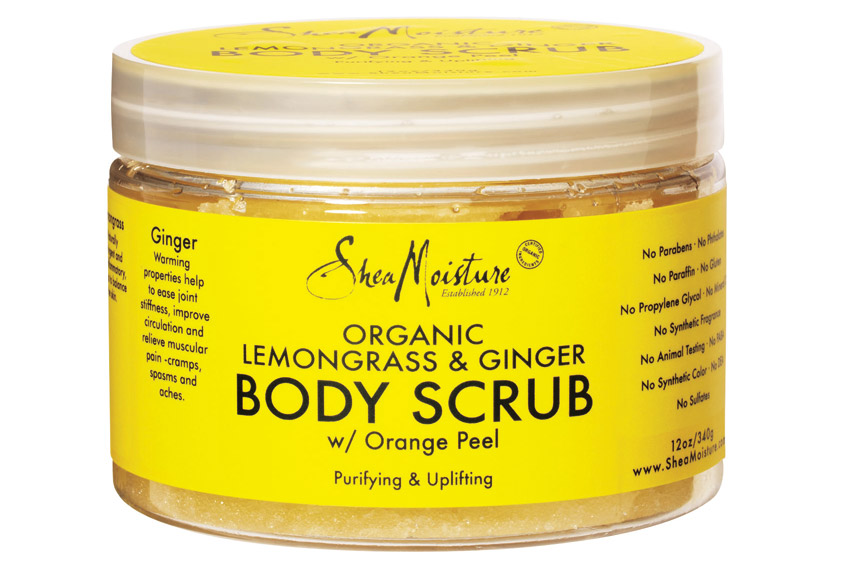
When I first started taking care of my hair, I was kind of all over the place. There was so much information online and in books that I just didn’t even know where to start or how to apply it all. I remember hearing people talk about balancing moisture and protein and this was something I didn’t quite understand, nor was it something I really saw as being beneficial. So as I grew greatly confused, I made up my mind to just ignore it and to just focus on my weekly hair routine. That was until the day it finally all clicked for me. 
MOISTURE
● Softens the hair
● Provides nutrients to the hair, even on a much deeper level
● Waters the hair, much like a plant, keeping it hydrated
● Makes hair much easier to manipulate, shape, and form
● Allows for new/virgin hair to be nourished to health
PROTEIN
● Strengthens the hair
● Brings protein and amino acids to the hair, after it has been stripped of it
● Rebuilds the hair follicle, as the natural hair follicle is naturally 70% keratin protein
● Decreases hair breakage and shedding
● Repairs damaged hair
When it all clicked for me, I was using Organics Root Stimulator’s Hair Mayonnaise on a weekly basis– loved the stuff. It made my hair super bouncy and because it was so creamy I automatically assumed it was “moisturizing”. But after a while my hair began drying out and I couldn’t understand why. Little did I know – it was protein based. I was over-proteining my hair. So, I snatched a moisture based product and it was able to soften my hair out and get rid of some of that protein. Once I started using moisture based products I noticed that my hair began balancing back out. As I continued using moisture-based products regularly, my hair became too soft and limp. So what did I do? I just did a protein treatment and BAM! my hair was good to go. It finally made sense, it’s important to have a few protein based products and a few moisture based products and it’s even more important to rotate between the two once you start experiencing drying out, extreme softness, and/or breakage. As a rule of thumb, they usually recommend that you do a protein treatment every six weeks. I do them every 3-5 weeks, based on what my hair needs. And too much of anything isn’t good. Here are some more hair desserts that my hair loves as it adds just the right amount of BLIZZAP! And below are a few tips to keep in mind when being your own hair mechanic.
If your hair is dry, brittle, and/or damaged, look to using moisture based products so it can rehydrate your hair.
If your hair is damaged, too soft, and/or limp, look to using a protein based product or treatment in order to strengthen your weakened hair.
Moisture softens the hair. So too much moisture makes hair very weak which causes it to fall out. Think weak person falling on the floor. Add protein (hair meat) to strengthen your hair.
Protein strengthens the hair. So too much protein and doing too many protein treatments will break the hair? Why? Overly strong hair, dries out, and breaks. Think straw. To make dry and brittle straw stronger, add moisture (hair water).
● Google search your product name along with the keywords, “moisture protein”. Forums may come up where people discuss whether or not the products are protein/moisture based. Also use Youtube as it’s also a great guide.
● Stear clear of products containing petroleum (clogs pores, byproduct of actual petroleum) and mineral oil (causes birth defects, cancer, lung problems).
● Protein Based Products:
Mane N Tail Shampoo, Motions Lavish Shampoo, Motions Moisture Silk Protein conditioner, Aubrey Organics GPB, Aphogee 2 Minute Keratin Reconstructor, Aphogee Treatment for Damaged Hair, Aphogee Green Tea Reconstructor, Infusium 23 Leave In Conditioner, Nexxus Emergencee, Nexxus Keraphix, Motions CPR, Cantu Shea Butter BreakCure, Cantu Shea Butter GrowStrong, Profectiv Breakfree Moisturizer, Profectiv Megagrowth Moisturizer, Elasta QP Mango Butter Moisturizer, Cantu Shea Butter Leave In Mane N Tail Conditioner, Garnier Fructis Long and Strong, Organic Root Stimulator (ORS) Hair Mayo, Got2B Soft 1 Minute Emergency, Rusk Sensories 60 second Revive, ORS replenishing pak, Garnier Fructis Long N Strong, Kenra Daily Defense leave in conditioner mist, Dove Intense Moisture Mist, Salerm 21 leave in conditioner, Organic Root Stimulator’s Olive Oil Moisturizer, Neutragena Silk Touch Leave In Conditioner [x]
● Moisture Based Products:
Neutragena Creme Lather Shampoo, Kenra Moisturizing Shampoo, KeraCare Moisturing Shampoo, Elucence Moisture Benefits Shampoo, Design Essentials Moisture Retention Conditioning Shampoo, Aveda Sap Moss Shampoo, and Creme of Nature Shampoo (green and red label), Crème of Nature Nourishing Conditioner, Herbal Essences, Replenishing Conditioner, Nexxus Humectress, Kenra Moisturizing Conditioner, Dove Intense Moisture, Neutragena Triple Moisture Daily Conditioner, Neutragena Triple Moisture Deep Recovery Mask, Elucence Moisture Balancing conditioner, Keracare Humecto, Mizani Moisturefuse, Elasta QP DPR-11 [x]
[A] Assess your hair: dry/hard? moisture. damaged/too soft/limp? protein. -or- if you’re hair seems off, assess what you’ve been using a lot of recently and use the opposite.
[B] Do the proper maintenance: use moisture based products or protein treatments in order to repair and nurse the hair.
[C] Rotate the products based on your hair’s needs. Many would suggest protein treatments every six weeks. Use this as your baseline and make adjustments accordingly!












